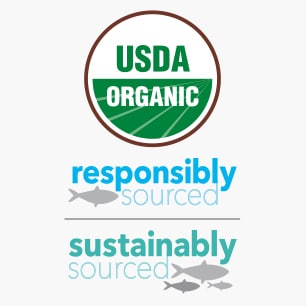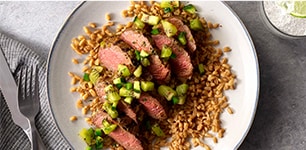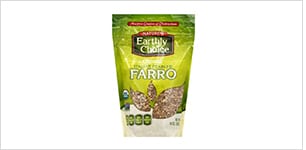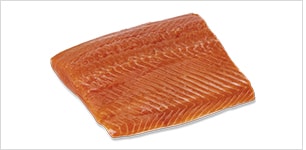As you shop to support your health goals, you may notice a multitude of callouts on packaged products addressing their nutrition and how they are produced. While the FDA and USDA regulate some health claims that appear on labels, other claims are simply advertising. Deciphering these claims—and the laws and regulations that govern them—can be confusing. Our registered dietitian nutritionists can help you understand claims and what they mean for you.

Meat, Poultry, and Eggs
The way animals are raised in the food production process is important to many customers. Here are some terms related to meat and poultry:1
No added hormones: The USDA prohibits the use of hormones in all poultry. When no added hormones appears on poultry packaging, it must be followed by the statement Federal regulations prohibit the use of hormones. For beef and pork, a no added hormones claim means that the producer chose not to use any hormones.
No antibiotics: A no antibiotics claim may appear on meat or poultry labels only if manufacturers provide sufficient documentation to the USDA demonstrating that the animals were raised without antibiotics.
Vegetarian fed: This claim means the meat or poultry received an all-vegetarian feed without animal products or by-products. Please note that young mammals drink their mothers’ milk; after being weaned, they are fed all-vegetarian diets.
If you’re looking for meat and poultry fed a 100% vegetarian diet and raised without antibiotics or added hormones,* check out our GreenWise meats. Try GreenWise flank steaks in our new Marinated Steaks with Kiwi Relish over Farro recipe.
Grass-fed: Grass-fed meat and meat products are generally understood to be those derived from cattle that consume only grass. However, because there is no official federal definition of grass-fed, check the label carefully. Some grass-fed producers, for example, may feed some grain, while others have a third-party certification or claim that the product is 100% grass-fed.2 Please note that calves drink mothers’ milk.
Be on the lookout! Grass-finished is not the same as grass-fed, because animals that are grass-finished may be fed grain.3
Cage-free: This label indicates that the flock can roam a building, room, or enclosed area with unlimited access to food and fresh water during their production cycle.2, 4
Free range: For chickens and eggs, free range means that the flock has access to the outdoors. For beef, pork, and other meats, the supplier must provide documentation as well as define what they mean by the claim. For example, with beef, a company may choose to define free range as having never been confined to a feedlot, which must be noted on the packaging.1
Seafood
Many customers want to know the origins of seafood and how seafood sourcing impacts our oceans. Be sure to look for our sustainably or responsibly sourced icons.
Sustainably sourced (wild caught): When you see our sustainably sourced icon with wild-caught seafood, it means that item has either been evaluated by the Sustainable Fisheries Partnership (SFP) and is considered “well-managed” in accordance with their guidelines, or it has an approved ecolabel as established by the Global Sustainable Seafood Initiative (GSSI).
Sustainably sourced (farm raised): With farmed seafood, the sustainably sourced icon identifies an item that has an approved ecolabel as established by GSSI’s standard for sustainable sourcing.
Organic
Organic is a USDA-defined labeling term that relates to the way foods are produced. National organic standards forbid the use of most synthetic fertilizers and pesticides, sewage sludge, irradiation, and genetic engineering to grow fruits, nuts, vegetables, and grains. Organic meat and poultry must not be irradiated. The animals must have access to the outdoors, and they cannot be given any growth hormones, antibiotics, or other drugs. All feed must be 100% organic, with no animal by-products.5
Quick tip! Look for our easy-to-spot USDA Organic and Made with at Least 70% Organic Ingredients icons across the store to quickly identify foods that meet these standards.
For the Love of You
Choosing how you eat is uniquely personal. It’s about your needs, your preferences, and your goals. As your wellness ally, we’re in your corner with fresh ideas, recipes, and wellness icons that make it easier to shift toward wiser food choices. It’s all about you, at your very best.
*Federal regulations prohibit the use of hormones in poultry.
Sources
1 United States Department of Agriculture (USDA). Meat and Poultry Labeling Terms. Food Safety and Inspection Service. August 10, 2015.
2 United States Department of Agriculture (USDA). Food Safety and Inspection Service Labeling Guideline on Documentation Needed to Substantiate Animal Raising Claims for Label Submissions. Food Safety and Inspection Service. December 2019.
3 Grass-Finished vs. Grain-Finished Beef. Cattlemen's Beef Board and National Cattlemen's Beef Association. Accessed May 14, 2020.
4 United States Department of Agriculture (USDA). Questions and Answers – USDA Shell Egg Grading Service. Agricultural Marketing Service. October 2015.
5 United States Department of Agriculture (USDA). Labeling Organic Products. Agricultural Marketing Service. Accessed May 14, 2020.

Marinated Steaks with Kiwi Relish over Farro
Try this quick-and-easy meal—ideal for your summer grill.

Nature’s Earthly Choice Farro
Pick up this organic grain that’s just right for your recipe.

Spiced Salmon with Mango Salsa and Cauliflower “Rice”
Your family is sure to love this flavorful Better Choice recipe.

Sockeye Salmon
This succulent fish—at peak season in July—is sustainably sourced.

 You are about to leave publix.com and enter the Instacart site that they operate and control. Publix’s delivery and curbside pickup item prices are higher than item prices in physical store locations. Prices are based on data collected in store and are subject to delays and errors. Fees, tips & taxes may apply. Subject to terms & availability. Publix Liquors orders cannot be combined with grocery delivery. Drink Responsibly. Be 21. For prescription delivery, log in to your pharmacy account by using the Publix Pharmacy app or visiting
You are about to leave publix.com and enter the Instacart site that they operate and control. Publix’s delivery and curbside pickup item prices are higher than item prices in physical store locations. Prices are based on data collected in store and are subject to delays and errors. Fees, tips & taxes may apply. Subject to terms & availability. Publix Liquors orders cannot be combined with grocery delivery. Drink Responsibly. Be 21. For prescription delivery, log in to your pharmacy account by using the Publix Pharmacy app or visiting